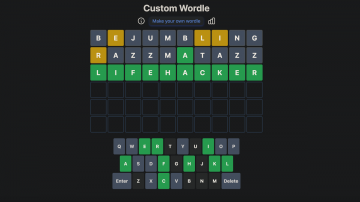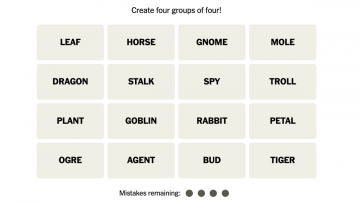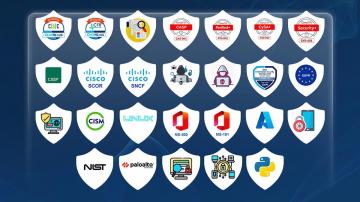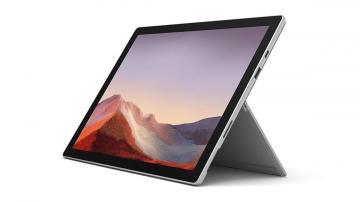Knowledge is essential to become successful in life, your career and your business. Without learning new concepts and becoming proficient in our craft, we cannot excel in our chosen careers or archive knowledge to pass down to the next generation.
But content comes in various forms, and because how we learn influences how much we know, we need to talk about learning styles. This article will focus on how to utilize visual learning to boost your career or business.
The Importance of Knowing Your Learning Style
Knowing your learning style enables you to process new information to the best of your ability. Not only does it reduce your learning curve, you’re able to communicate these same concepts to others effectively.
But it all starts when you’re able to first identify the best way you learn.
As a college student, I soon figured out that taking online courses without visual aids or having an instructor in front of me led to poor retention of concepts.
Sure, I got good grades and performed excellently in my online exams. However. I discovered that I couldn’t maintain this performance level because I forgot 80 percent of the course content by the end of the semester.
There are several types of learning styles known to mankind. To give an idea of how visual learning stacks up against other learning styles, here’s a brief mention of some of the different types of learning styles we have.
The four most popular types of learning styles are:
Visual learning style (what this article talks about). Aural or auditory learning style (learning by listening to information presented). Verbal or linguistic learning style (learning that involves speech and writing). Tactile learning style (learning by touching and doing)But for the purposes of this article, we will be focusing on using visual learning to boost your career or business.
How to Know If You’re a Visual Learner?
When it comes to boosting your career, business (or education), a visual learner is one who would most definitely choose shapes, images, symbols, or reading over auditory messages.
I’m talking about preferring to read an actual map when navigating to a new place over listening to verbal directions. I’m talking about discovering that you actually have trouble remembering what your manager said at the meeting because there were no graphs or illustrations to support the points raised.
Most people who struggle with learning probably aren’t leveraging their best learning styles. The earlier you identify how your learning style can boost your success, the less struggle you will encounter with processing new information throughout your career.
However, visual learning in particular CAN 10x your career or business whether it is your preferred learning style or not. And here’s why:
Several studies have arrived at the conclusion that the brain retains more information with the help of visual aids. In other words, images are directly processed by our long-term memory which helps us store information for longer periods of time.
While some lessons can be performed orally, several concepts can only make sense if you have an image with an explanation of sequences (i.e learning about the human DNA).
Visual learning does use a different part of the brain and visual cues are processed by the part of the brain known as the occipital lobe.
By engaging more parts of the brain during learning, you’re able to have a fuller understanding of concepts and facilitate better interaction with your immediate environment.
How to Use Visual Learning for Success
Here’re 4 ways to use visual learning to boost your career or business:
1. Bring back the to-do list. Then add shapes and colors to boost productivity.
We live in an age where computers have taken over virtually every aspect of productivity and most human functions. But written lists are making a comeback, and with an endless number of important tasks to complete, having a to-do list of tasks in order of importance can improve your productivity.
While coming up with a list is initially challenging, adding colors and shapes to written lists that you personally write and manage gives you an extra layer of assurance and boosts aids recall so that you actually get stuff done.
I have tried this technique in my work as a registered nurse and discovered that adding shapes and colors to to-do lists helps me delegate tasks, recognize where more work is needed, and makes it easy to cross off completed tasks at the end of the day.
2. Add graphs, charts and symbols to your reports.
Yes, it seems like more work cut out for you. However, graphs enable you monitor the heartbeat of your business.
Graphs and charts help you trend your finances, budget, and pretty much any data overtime. With the help of free and premium software available on the market, it has become easier to take plain data and in a matter of seconds, have relevant information displayed in different shapes and images.
As an entrepreneur, you can make predictions and allocate funds wisely when you’re able to see whether your efforts are rewarded. You can use colors and charts to delegate actions to members of your team and track performance at the same time.
And when broken down into monthly, quarterly, bi-annual or annual goals, graphs and charts communicate what ordinary text cannot.
3. Effectively brainstorm with mind-mapping.
Mind-mapping is not new but I don’t think it’s been talked about as often as we do to-do lists.
With mind mapping, you’re organizing information accurately and drawing relationships between concepts and pieces from a whole.
Think of a mind map as a tree with several branches. For example, the tree can symbolize healthcare while each branch stands for nursing, medicine, laboratory science, and so on. When you look at nursing, you can further branch out into types of nursing; pediatric, women’s health, critical care, and so on.
It’s an interesting relationship; the more ideas you’re able to come up with for your chosen subject, the deeper you get and the stronger the association.
Mind maps really show you relationships between subjects and topics, and simplifies processes that might seem complicated at first glance. In a way, it is like a graphical representation of facts presented in a simple, visual format.
Mind mapping isn’t only limited to career professionals; business owners can benefit from mind mapping by organizing their online learning activities and breaking down complex tasks into simple actions so that you can accurately measure productivity.
4. Add video streaming to meetings.
What if you could double the productivity of your team members by video streaming your meetings or adding flash animation to your presentation at the same time?
When you offer video as an alternative method of processing information to colleagues, there is a greater chance of retaining information because we recreate these stories into images in our minds.
For organizations that hold virtual meetings, it can also be an effective way to enhance performance during if people can see their colleagues in addition to flash animation or whatever form of video is provided during the meeting.
Is Visual Learning Better Than Other Learning Styles?
No, that is not the point. The goal here is to supplement your existing dominant learning style with visual learning so that you can experience a significant boost in how you process and use everyday information.
You might discover that understanding scientific concepts are much easier after incorporating visual learning or that you’re able to understand your organization’s value when projected on a visual screen with charts and graphs.
The overall goal is to always be learning and to continue to leverage visual learning style in your career and business.
More About Learning Styles
Featured photo credit: Unsplash via unsplash.com





























































